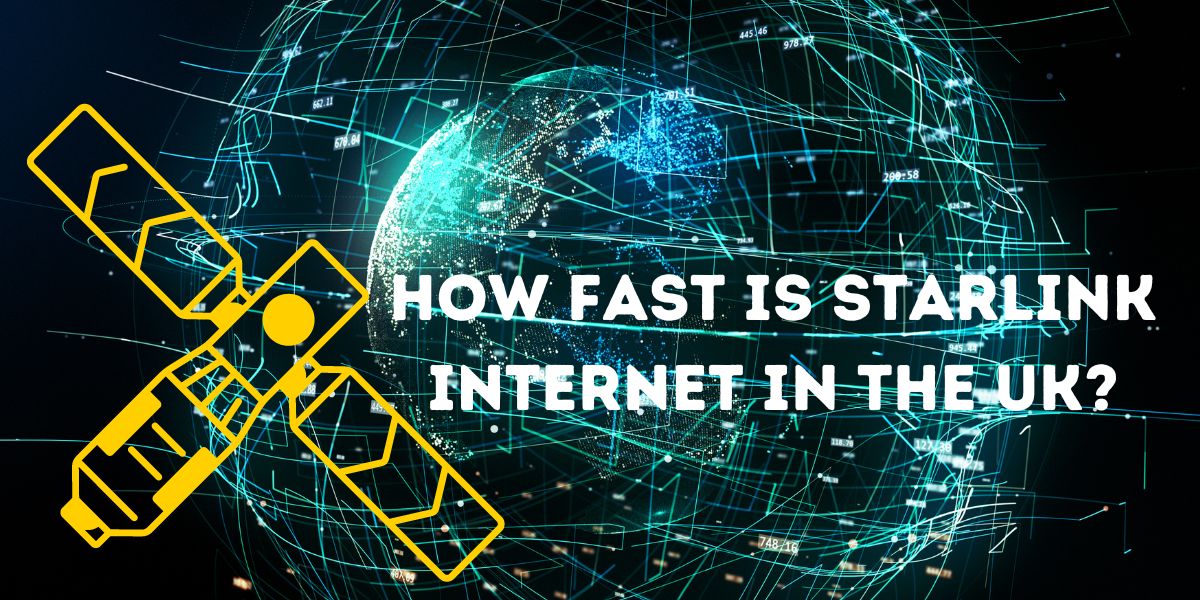In an era where high-speed internet is crucial for education, business, and connectivity, many Pakistanis are eagerly awaiting access to Starlink, the satellite internet service pioneered by SpaceX under Elon Musk’s leadership. With its promise of delivering high-speed, low-latency internet to remote and underserved areas, Starlink has sparked significant interest in Pakistan, a country where internet access can be unreliable, particularly in rural regions. But is Starlink available in Pakistan as of July 2025? In this article, we’ll explore the current status of Starlink’s availability, the regulatory hurdles it faces, its potential impact, and what users can expect in the near future.
What is Starlink?
Starlink is a satellite internet constellation operated by SpaceX, utilizing thousands of low Earth orbit (LEO) satellites to provide broadband internet globally. Unlike traditional internet services that rely on fiber-optic cables or cellular towers, Starlink beams internet signals directly to a user’s satellite dish, offering speeds ranging from 50 to 500 Mbps and latency as low as 20–40 milliseconds. This makes it a game-changer for areas with limited or no access to conventional broadband, such as Pakistan’s rural and mountainous regions like Gilgit-Baltistan or Kurram.
The service requires a Starlink kit, which includes a satellite dish, Wi-Fi router, and mounting equipment, along with a monthly subscription. Globally, Starlink has been lauded for its ability to connect remote communities, with reported download speeds of up to 250 Mbps in some regions, rivaling or surpassing traditional broadband.
Current Status of Starlink in Pakistan
As of July 2025, Starlink is not yet commercially available in Pakistan. However, significant progress has been made toward its eventual launch. Here’s a detailed look at the current situation:
-
Registration and Licensing: Starlink Internet Services (Private) Limited has been registered with the Securities and Exchange Commission of Pakistan (SECP) since February 2022, marking a formal step toward entering the Pakistani market. The company has applied for a Long Distance & International (LDI) license and 14 Local Loop (LL) licenses from the Pakistan Telecommunication Authority (PTA) to operate legally. In March 2025, Starlink received a No Objection Certificate (NOC) from the PTA, a critical milestone, but it still requires security clearance and additional approvals before services can begin.
-
Regulatory Hurdles: The PTA and the Ministry of Information Technology and Telecommunication (MOITT) are overseeing Starlink’s licensing process, which involves compliance with Pakistan’s National Satellite Policy 2023 and the Pakistan Space Activities Rules 2024. Starlink must also secure approvals from the Frequency Allocation Board (FAB) to manage spectrum allocation and avoid interference with existing systems. Additionally, the company is in talks to establish two or three ground stations in Pakistan to support its satellite network. These regulatory and technical requirements have delayed the commercial rollout, with industry insiders estimating it could take up to a year from March 2025 for services to become widely available.
-
Security and Political Concerns: National security is a significant factor in the delay. The PTA has expressed concerns about data privacy, encryption, and the potential for Starlink to bypass Pakistan’s national firewall, which is used to regulate internet traffic. Reports indicate that smuggled Starlink equipment has been used illegally in areas along the Afghanistan border, raising alarms about unregulated access. Furthermore, some Pakistani lawmakers have linked Starlink’s approval to political issues, citing controversial statements by Elon Musk about Pakistan on social media platform X. For instance, Senator Palwasha Khan suggested that Starlink’s license should be conditional on Musk issuing an apology for remarks perceived as derogatory, though others argue that business decisions should prioritize national interest over personal comments.
-
Pilot Testing: In February 2025, Starlink conducted pilot testing in Pakistan, overseen by a team from the Army, Air Force, PTA, and other agencies. This testing was part of the security clearance process, but no official launch followed. The PTA has stated that Starlink services, even with roaming plans, are not functional in Pakistan without proper licensing, and geoblocking ensures that smuggled or roaming kits do not work.
Why the Delay?
Pakistan’s regulatory framework is complex, especially for satellite-based services like Starlink. The country’s telecom sector is tightly controlled by the PTA, which requires foreign companies to comply with stringent licensing, security, and spectrum regulations. Key challenges include:
-
Security Clearance: Starlink’s ability to provide unfiltered internet access raises concerns about bypassing Pakistan’s firewall, which is used to monitor and restrict online content. The government is cautious about approving a service that could be used by unauthorized entities, as evidenced by reports of smuggled Starlink kits being used by IT companies and terrorist groups in border areas.
-
Spectrum and Infrastructure: Establishing ground stations and securing spectrum allocation are critical for Starlink’s operations. These processes involve coordination with the FAB and the Pakistan Space and Upper Atmosphere Research Commission (SUPARCO), which adds time to the rollout.
-
Political Sensitivities: Musk’s comments on X about child sexual assault cases in the UK involving Pakistani men have sparked outrage among some Pakistani legislators, complicating the approval process. While some lawmakers advocate for separating business decisions from political disputes, others see Musk’s remarks as a barrier to approval.
-
Market Dynamics: Pakistan’s telecom market is dominated by mobile network operators (MNOs) like Jazz, which argue that terrestrial networks are essential for last-mile connectivity and affordability. Starlink’s high costs (more on this below) may limit its appeal to the average consumer, prompting regulators to prioritize local providers.
Potential Pricing and Packages
Although Starlink has not officially launched in Pakistan, estimated pricing based on global trends provides insight into what users might expect:
-
Residential Package: 50–250 Mbps, approximately PKR 35,000/month, with a one-time hardware fee of PKR 110,000.
-
Business Package: 100–500 Mbps, around PKR 95,000/month, with a hardware cost of PKR 220,000.
-
Mobility Package: 50–250 Mbps, about PKR 50,000/month, with equipment costing PKR 120,000.
These prices are significantly higher than local broadband options, which offer 100 Mbps connections for around PKR 15,000/month. The high cost could limit Starlink’s adoption to businesses, freelancers, or users in remote areas where alternatives are scarce.
Potential Impact of Starlink in Pakistan
Starlink’s eventual launch could transform Pakistan’s digital landscape, particularly in underserved regions. Here’s how:
-
Bridging the Digital Divide: With only 50% of Pakistan’s population having access to reliable internet, Starlink could connect remote areas like Balochistan, Khyber Pakhtunkhwa, and Gilgit-Baltistan, where fiber-optic infrastructure is limited. This would benefit freelancers, students, and small businesses reliant on stable internet.
-
Boosting the IT Sector: Pakistan’s IT industry is growing at 30% annually, but internet disruptions have hampered freelancers and digital marketers. Starlink’s low-latency, high-speed internet could enhance productivity and competitiveness.
-
Competition for Local Providers: Starlink’s entry could push MNOs to improve their services and infrastructure, benefiting consumers with better options. However, it’s unlikely to replace terrestrial networks due to cost and accessibility challenges.
-
Challenges to Affordability: The high cost of Starlink’s equipment and subscriptions may make it inaccessible to the average Pakistani, limiting its impact to niche markets unless pricing is adjusted.
Alternatives to Starlink in Pakistan
While awaiting Starlink’s launch, users in Pakistan can explore other internet options:
-
Fiber Broadband: Providers like PTCL and StormFiber offer speeds up to 100 Mbps in urban areas, with plans starting at PKR 2,000–15,000/month.
-
Mobile Data: Jazz, Telenor, and Zong provide 4G services, with speeds up to 50 Mbps in urban areas, though rural coverage is spotty.
-
E-SIM Services: For travelers or those in remote areas, e-SIM providers like Saily offer temporary solutions, though they lack Starlink’s consistency.
-
Local ISPs: In areas like Kurram, local providers like “Starlink Internet Services” (unrelated to SpaceX) offer regional solutions, but speeds and reliability vary.
What’s Next for Starlink in Pakistan?
The PTA has indicated that Starlink’s licensing process could be finalized within months, with some sources suggesting a potential launch by mid-2026, provided security and spectrum approvals are secured. Starlink’s plans to establish ground stations and its ongoing negotiations with the PTA and SUPARCO are positive signs. However, the government’s cautious approach to security and Musk’s political controversies could further delay progress.
For now, users interested in Starlink can visit the official website (starlink.com) to check availability by entering their address, though Pakistan remains listed as “Coming soon.” Pre-orders may require a refundable deposit (historically $99 globally), but the PTA has previously advised against placing pre-orders until official approval is granted.
Conclusion
Starlink is not currently available in Pakistan as of July 2025, but it is closer than ever to launching. With registration complete, a No Objection Certificate secured, and ongoing discussions for licensing and ground stations, Starlink could soon bring high-speed internet to Pakistan’s remote and underserved areas. However, regulatory hurdles, security concerns, and high costs pose challenges to widespread adoption. For Pakistanis eager for reliable internet, Starlink represents a promising but expensive solution, and its success will depend on navigating the country’s complex regulatory landscape. In the meantime, exploring local broadband or mobile data options may be the best course for most users. Stay tuned to Starlink’s official website or local news for updates on its launch timeline.


